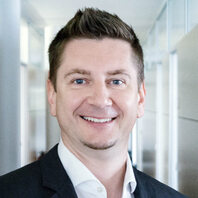The trend towards more renewable energies and electromobility increases the need for different materials with special properties in terms of their strengths or electrical conductivity, such as copper and/or aluminum materials. With our innovative laser welding processes, copper and/or aluminum materials can be welded flexibly, fully automatically and with little heat input.
The short-pulse laser welding process, for welding bimetals, is based on high-frequency temporal modulation of peak power at up to several 100 kHz.
Short-pulse laser welding allows even more stable control of the weld penetration depth. Due to the nature of the process itself, it is possible to create any weld seam or spot geometry from 50 µm wide micro-seams to spot welds of any shape with a diameter of several millimeters.
Almost any material combination of aluminum, copper, steel, Hilan, brass, stainless steel, etc. can be welded. Due to the extremely stable and precisely adjustable welding depth, overlap welding with sub-materials of 300 µm thickness and less is also possible. The welding process is also very flexible in terms of surface finish. For example, highly reflective materials such as chemically etched or polished copper, silver and gold or extreme contamination as well as oil and alkali residues pose no obstacles. The use of conventional laser welding processes would be impossible here.
Especially with bimetallic joints, the mixing of the melt is critical, as brittle phases result. For this reason, in addition to conventional laser welding, Manz also offers a welding process in which the mixing of the melt is almost completely suppressed, resulting in weld seams with very high strengths: laser welding in overlap using high-frequency local modulation, or "wobbling" for short.
A fully calibrated 3D scanner, camera technology and topography measurements ensure sufficiently high machining precision in all spatial directions coupled with the speed and flexibility of remote machining. To compensate for component tolerances or to enable processing in different working planes, the process heads also have an optical Z-axis. This allows highly precise positioning of the working plane of the scanner in the Z direction in less than 10 ms.
Manz's P3 processes are performed either in continuous wave operation or also pulsed in qcw operation. We use powerful mutimode lasers in the infrared wavelength range and the latest beam shaping technologies, covering almost the entire range of our customers' welding requirements for battery manufacturing and the electronics industry.
Frequency-doubled multi-mode lasers ("green" lasers) are used for particularly high quality requirements on copper joints of medium welding depths. Due to the significantly higher absorption coefficients of the "green" laser radiation on copper materials, more stable and efficient welding processes as well as the precise control of heat conduction welding processes, transition welding processes and deep welding processes can be implemented without large jumps in the welding depths.
In addition to the welding processes themselves, we offer tools for process monitoring. Here we distinguish between pre-processing, inline monitoring and post-processing.
In pre-processing, for example, incorrectly positioned components can be detected before the welding process and, if necessary, automated corrections can be made during production, such as height compensation of the laser's focus position or, if necessary, adjustment of the lateral welding position.
For inline monitoring, we rely on well-known and market-leading third-party solutions by recording laser-based process emissions. Individually adapted photodiodes are integrated coaxially to the laser beam in our processing optics, calibrated and taught-in for fully automated defect detection (teach-in), so that suitable algorithms are used to decide whether a weld has been successful or should be rejected for rewelding.
In post-processing, the completed welds are camera-based and evaluated using machine learning algorithms. Predictions can be generated during production to save costs and time without losing sight of quality.
 Dmitrij
Walter
Head of Laser Processing Technology
Dept. Laser Processing
+49 7121 9000 0
laser@manz.com
Dmitrij
Walter
Head of Laser Processing Technology
Dept. Laser Processing
+49 7121 9000 0
laser@manz.com


